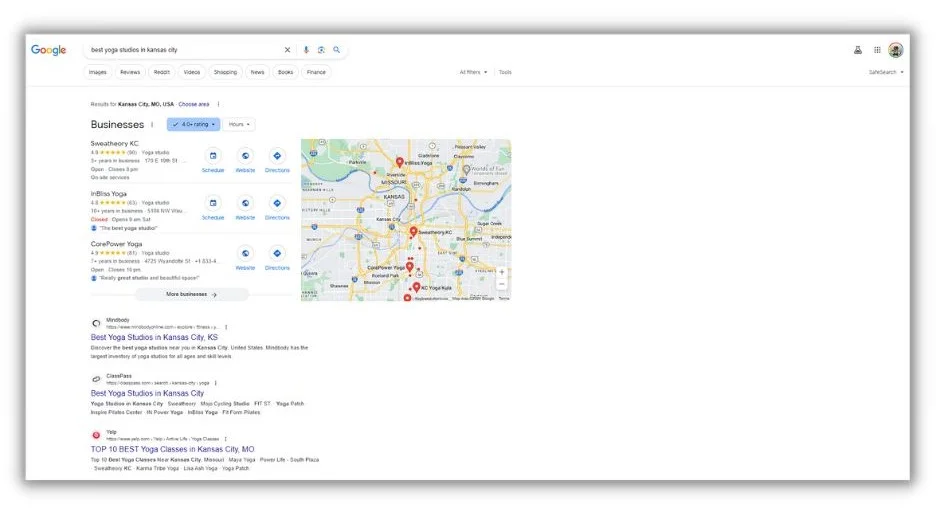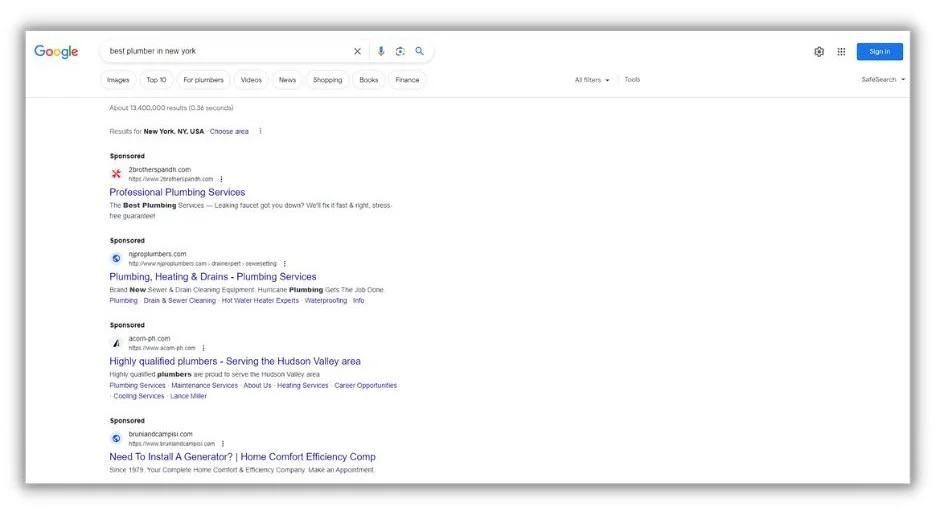When businesses want to grow online, they use marketing strategies to attract more people to their websites and social media pages. But getting more traffic doesn’t automatically mean more sales. That’s why generating marketing leads is so important.
So, what is a lead in marketing? How do you get more of them? And what can you do to convert them into customers?
We’ll answer these questions in this guide and make sure you have what you need to generate more marketing leads for your business.
Table of contents
- What are marketing leads?
- Why is marketing lead generation important?
- How do you get marketing leads?
- How do you convert marketing leads?
- How do you measure the success of marketing lead generation?
What are marketing leads?
Marketing leads are people who have shown some level of interest in a business’s products or services. This includes people who have visited your website, interacted with an ad, or followed your social media account.
Since these people have entered the sales funnel through a marketing channel, they are considered a marketing lead. They may be identifiable (like if they offer their email address). Or they may still be mostly anonymous, like if they look at a product page and leave. However, even those anonymous visitors may be able to be remarketed.
Marketing leads vs. MQLs
Marketing qualified leads (MQLs) is another term often used interchangeably with marketing leads, but there’s a difference between the two.
Marketing leads are at the top of the sales funnel. They are not yet qualified in terms of their likelihood to buy a product or a service, and they have merely shown some engagement.
On the other hand, MQLs are a subset of marketing leads that are more likely to become customers. They are at the bottom of the sales funnel and have performed actions indicating higher interest in purchasing.
What defines an MQL is up to each business. But it’s usually a marketing lead that’s taken an action that more often leads to making a purchase.
For example, someone who signs up for your newsletter may not be an MQL if most people who do that still don’t buy. But, if most people who download an ebook about your product become customers, then anyone who takes that action would be an MQL.
Why is marketing lead generation important?
58% of American consumers purchase products after seeing them on social media, and 74% of in-store shoppers search for a product on search engines before visiting the store in person.
You can tap into this large market segment by investing in marketing lead-generation campaigns. Marketing attracts and qualifies more leads, allowing your sales team to close new business more efficiently.
How do you get marketing leads?
Now that you know what marketing leads are and why investing in marketing lead generation campaigns is important, here are the top four ways to generate marketing leads.
Content marketing
Creating and sharing valuable content helps to establish authority and trust. Content marketing is also a powerful tool for SEO, driving traffic to your website, and generating leads. That’s why 90% of organizations worldwide have some kind of content marketing strategy in place.
To generate leads through content marketing, develop content that addresses your audience’s questions, challenges, and interests. This content can be in the form of articles, videos, infographics, ebooks, or webinars. If you create content relevant to your target audience, they will engage with you, ask questions, and sign up for your offers, effectively turning them into marketing leads you can nurture.
Look at this video from Makeup MogulTV:

This video is a prime example of the kind of content that generates leads. The channel has around 18,000 followers, and this video has 56,000 views, plus hundreds of comments. Since it offers seven steps to become a professional makeup artist and addresses specific pain points beginners face, the comments are exclusively from people who want to become makeup artists. The content creator has also linked to their social media pages and provided their email address in the description, which will help them get more inbound leads.
Take a page from Makeup MogulTV’s book and create content that educates your audience and addresses their pain points. You will enjoy an increased number of inbound leads.
Social media marketing
94% of all internet users use social media. Whether you work in healthcare, education, or retail, your target audience is on social media, and it is one of the best places for you to engage them. That’s why social media marketing is one of the best lead-generation strategies.
Cleveland Clinic uses social media, especially its Instagram account, well. It posts educational content and patient stories, which helps it cater to its target audience and results in increased authority and leads. Look at this patient’s story and the audience’s reaction to it.

Follow Cleveland Clinic’s example and post content specific to social media platforms like Instagram, Twitter, or TikTok to engage your audience to generate leads.
Search engine optimization (SEO)
Search engines like Google are among the most visited websites in the world. In December 2023 alone, Google received 84.2 billion visits from users worldwide. That makes search engines a great avenue to generate marketing leads.
Through search engine optimization, you improve your website’s rankings. That significantly increases your online visibility and the number of marketing leads you get from search engines.
Look at what happened when I searched for “best yoga studios in Kansas City”.

Google gave me three local results, complete with directions, contact information, and hours of operation. Those three results are called the local pack, and they get most of the traffic. It also showed several results outside of the local pack.
These websites optimized their pages for ‘best yoga studios in Kansas City’ because they recognized it as an important keyword. By optimizing for this keyword, they allowed themselves to generate foot traffic and leads in the form of inbound calls and online inquiries.
🚨 Use this free guide to keyword research and find the exact keywords you need to optimize for.
Search ads
Sometimes, no matter how much you try to optimize for specific keywords, you won’t be able to outrank your competitors. In such cases, running paid search ads is a faster yet more expensive option to put your website front and center for relevant keywords. That’s why advertisers spent an estimated $197 billion on search advertising in 2023, which is expected to grow to $261 billion by 2028.
Look at what happened when I searched for “best plumber in New York.”

Google gave me four ads shown as “sponsored” results, and I had to scroll down to get to the local pack and organic results. These ads follow a cost-per-click model where you only have to pay if someone clicks on them.
Paid advertising is not just limited to search advertising. You can also use social media ads.
💡 Your budget is precious. Use the free Google Ads Grader to make sure your ads are running at peak performance.
How do you convert marketing leads?
Once you have marketing leads, you should start taking steps to turn them into MQLs and sales.
As we discussed earlier, marketing leads are people who have shown interest in your products or services but aren’t necessarily at the buying stage of their journey. Once you have their contact information, you can build a relationship with them so they prefer you when they get to the buying stage.
Here’s what you should do when a marketing lead comes in.
Lead segmentation
Divide your leads into groups based on common characteristics or behaviors. This allows for more targeted and relevant marketing efforts.
For example, you can segment your leads based on the products they showed interest in. Then, send them promotional emails when you have new products or offers in the same category.
Lead scoring
Ideally, each lead should be assigned a lead score that gets updated every time the user performs an action.
Let’s say someone signs up for your newsletter through a popup on your blog, and it’s the first time you collected their email address. They’d be a net new lead with a minimal lead score. After that, every time they visit your website, their actions would result in an increased lead score. This user journey would look something like this:
- Home Page Visit: +2 points
- Product Page Visit: +5 points
- Pricing Page Visit: +10 points
- Contact Us Form: +10 points
The actual scores will vary based on your requirements. You may decide to give home page visits a lower score or filling out a contact form a higher score based on your audience. Either way, the more actions they perform on your site, the higher their score will be, and at a certain point, they will cross into the MQL territory.
Lead qualification
Qualifying the leads as they come in will help you determine your next course of action.
Some marketing leads become MQLs by accumulating a higher score over time, while others come in hot as MQLs. That’s why you need a lead management strategy to assess each lead and decide where it belongs. When a person fills out a form to inquire about a service, engages with you on live chat to ask about pricing or signs up for a demo, they are a qualified lead from the start and are already at the buying stage of their journey.
Qualified leads are ready to purchase, so your communication with them will be about the features and pricing of your products or services.
Unqualified leads are not ready to make purchases, so your next action will be to nurture them.
Lead nurturing
Most marketing leads aren’t ready to buy. You’ll need to nurture the relationship as they learn about your solutions and become more trusting of your brand.
Communicate with them through emails, newsletters, and personalized content that addresses their specific interests or pain points, and build a relationship with them over time. Keep them coming back to your website or social media pages with new offers, and encourage new and repeat business.
Here are some ways to nurture leads:
- Send customized emails based on the lead’s interests and interactions with your brand.
- Provide valuable information through blogs, ebooks, webinars, or guides relevant to their needs.
- Keep in touch with leads through periodic email or phone calls.
- Create special offers or discounts tailored to the lead’s interests or past behavior.
- Share success stories like case studies and testimonials to build trust and credibility.
- Ask for their opinions to show you value their input and to gather insights.
How do you measure the success of marketing lead generation?
Measuring the success of your lead generation and marketing efforts will help you find the best strategies. Here are some key marketing metrics you should track:
- Conversion rate: This is the most direct indicator of success. It measures the percentage of traffic that converts into leads. A high conversion rate means your lead generation strategies are effective.
- Cost per lead (CPL): This metric calculates the cost-effectiveness of your marketing campaigns. It is determined by dividing the total cost of your marketing efforts by the number of leads generated. Tracking CPL helps with budgeting and identifying which channels are most cost-effective.
- Time to conversion: Track the average time it takes for a lead to move from initial contact to becoming a customer. This will help in optimizing your lead nurture strategy.
- Lead source effectiveness: Analyze which marketing channels (social media, email, content marketing, etc.) bring in the most and the highest-quality leads. This will help allocate resources to the most productive channels.
Regularly reviewing these metrics will provide a comprehensive view of your marketing effectiveness, allowing for data-driven decisions to optimize strategies and improve outcomes.
Generate more marketing leads
Marketing leads are an important part of any business’s growth. The more marketing leads you generate, the more chances you have to welcome new customers.
Consider every channel at your disposal when generating new leads. Organic search, paid social media ads, and email marketing are all top contenders for delivering more leads. This is referred to as a cross-channel marketing strategy, and it’s a powerful way to attract customers from wherever they spend time online.






